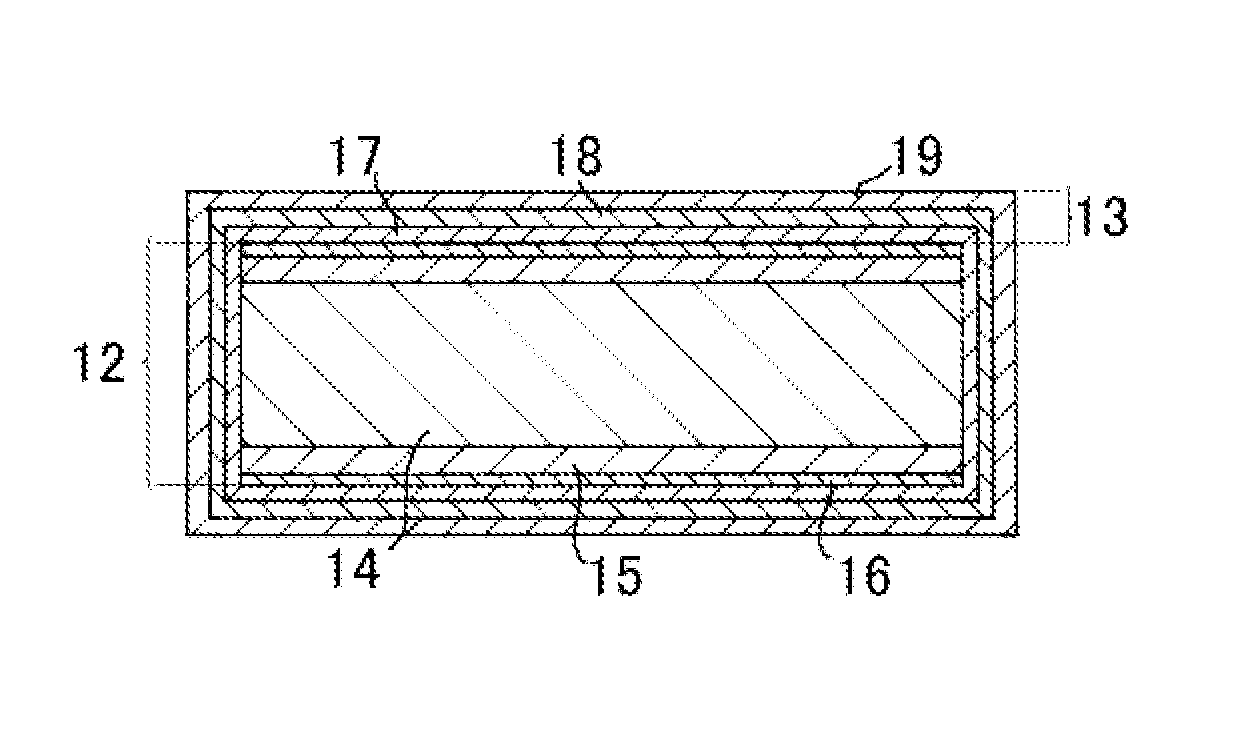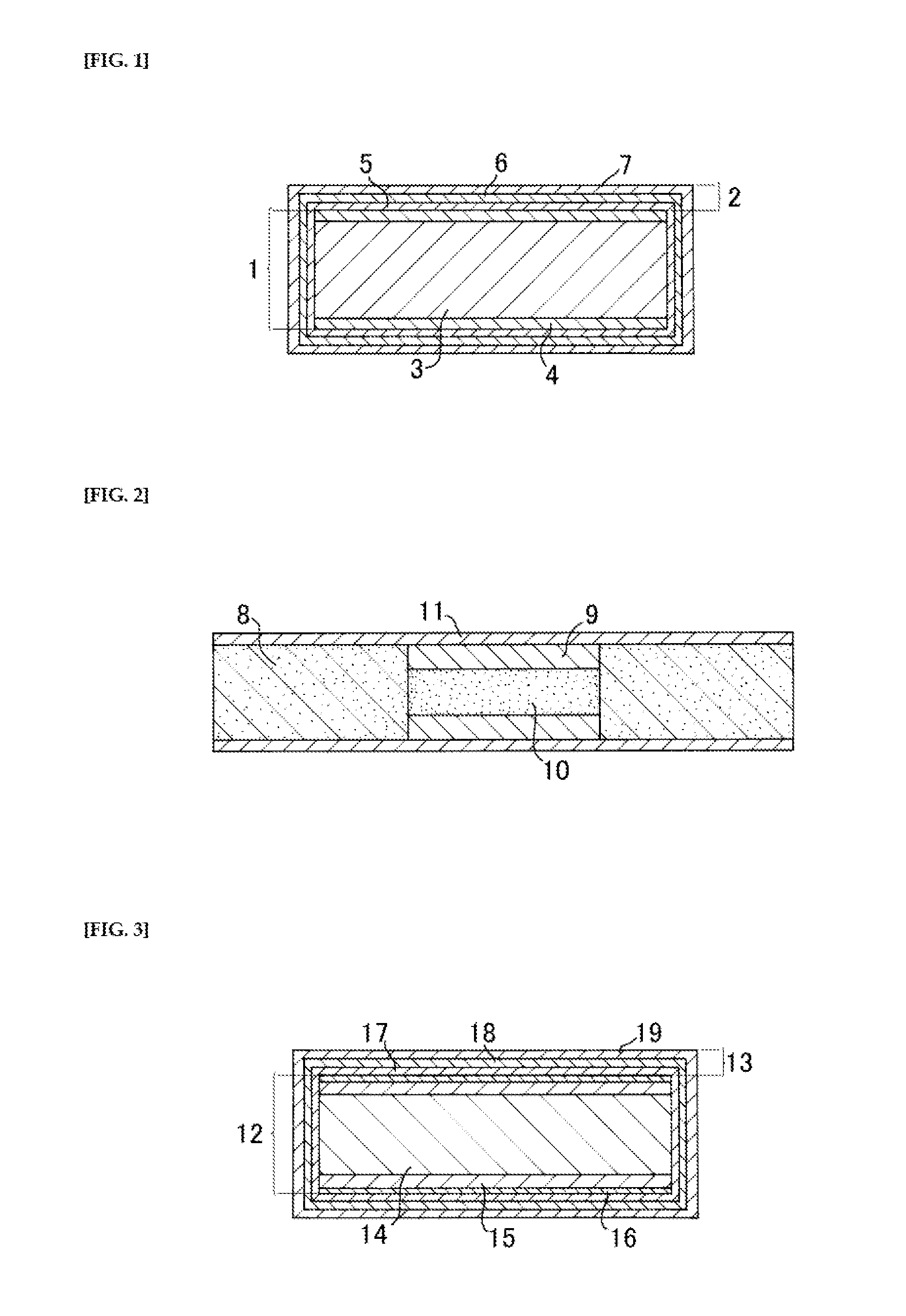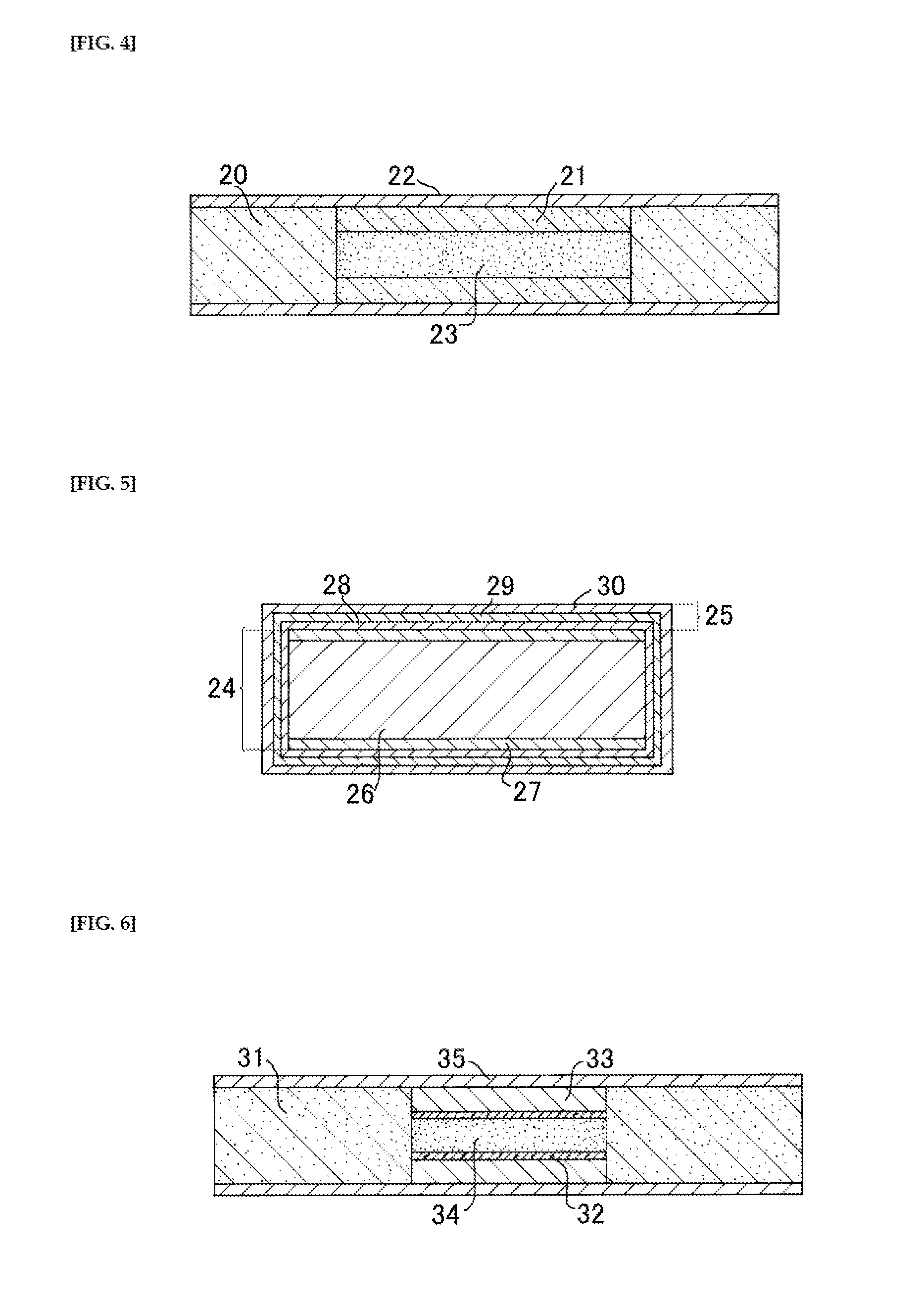Heat dissipating component for semiconductor element
a technology of heat dissipation component and semiconductor element, which is applied in the direction of laminated elements, liquid/solution decomposition chemical coating, lighting and heating apparatus, etc., can solve the problems of mismatch between the thermal expansion of semiconductor elements and heat dissipation heat sinks, the difficulty of achieving heat dissipation, so as to improve the platability of the surface and improve the effect of heat dissip
- Summary
- Abstract
- Description
- Claims
- Application Information
AI Technical Summary
Benefits of technology
Problems solved by technology
Method used
Image
Examples
embodiment 1
[0028]As shown in FIG. 1, the heat dissipating component for a semiconductor element according to Embodiment 1 of the present invention is composed of an aluminum-diamond composite 1 and a surface metal layer 2. The aluminum-diamond composite 1 consists of a plate-shaped composite portion 3 consisting of an aluminum-diamond composite material comprising diamond particles and a metal having aluminum as a main component, and a covering layer 4 provided on both faces of the composite portion 3. In the aluminum-diamond composite material, the diamond particle content is 40 vol % to 70 vol % of the aluminum-diamond composite material overall. The covering layer 4 consists of a material comprising a metal containing aluminum, and the surface metal layer 2 consists of an amorphous Ni alloy layer 5, Ni layer 6 and Au layer 7.
[0029]The heat dissipating component for a semiconductor element of this structure has high thermal conductivity and a coefficient of thermal expansion close to that of...
embodiment 2
[0070]The heat dissipating component for a semiconductor element according to Embodiment 2 of the present invention is composed of an aluminum-diamond composite 12 and a surface metal layer 13, as shown in FIG. 3. The aluminum-diamond composite 12 consists of a plate-shaped composited portion 14 consisting of an aluminum-diamond composite material comprising diamond particles and a metal mainly composed of aluminum, and two covering layers 15, 16 provided on both sides of the composited portion 14. In the aluminum-diamond composite material, the diamond particle content is 40 vol % to 70 vol % of the entire aluminum-diamond composite material. As for the covering layers 15, 16, the covering layer 15 on the composited portion 14 side consists of an aluminum-ceramic composite, while on the other side, the covering layer 16 consists of a metal layer mainly composed of aluminum. The surface metal layer 13 consists of an amorphous Ni alloy layer 17, a Ni layer 18 and an Au layer 19.
[0071...
embodiment 3
[0082]Next, the heat dissipating component for a semiconductor element according to Embodiment 3 shall be explained. As shown in FIG. 5, the heat dissipating component according to Embodiment 3 is composed of an aluminum-diamond composite 24 and a surface metal layer 25. The aluminum-diamond composite 24 consists of a plate-shaped composited portion 26 consisting of an aluminum-diamond composite material and covering layers 27 provided on both surfaces of the composited portion 26. The covering layer 27 consists of an aluminum-ceramic fiber composite material, and the surface metal layer 25 consists of an amorphous Ni alloy layer 28, a Ni layer 29 and an Au layer 30.
[0083]The heat dissipating component according to the present Embodiment 3, as shown in FIG. 6, involves compositing the aluminum alloy by squeeze casting with ceramic fibers 32 arranged between the dense mold release plates 33 to which a mold release agent has been applied and the diamond powder 34 loaded between the mo...
PUM
| Property | Measurement | Unit |
|---|---|---|
| thickness | aaaaa | aaaaa |
| thickness | aaaaa | aaaaa |
| thickness | aaaaa | aaaaa |
Abstract
Description
Claims
Application Information
 Login to View More
Login to View More - R&D
- Intellectual Property
- Life Sciences
- Materials
- Tech Scout
- Unparalleled Data Quality
- Higher Quality Content
- 60% Fewer Hallucinations
Browse by: Latest US Patents, China's latest patents, Technical Efficacy Thesaurus, Application Domain, Technology Topic, Popular Technical Reports.
© 2025 PatSnap. All rights reserved.Legal|Privacy policy|Modern Slavery Act Transparency Statement|Sitemap|About US| Contact US: help@patsnap.com



